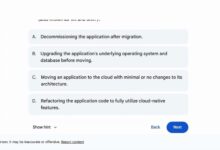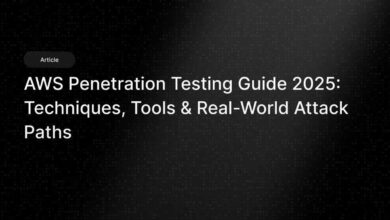AWS CLI Mastery: 7 Powerful Tips to Supercharge Your Workflow
Ever feel like you’re just scratching the surface of AWS? Meet the AWS CLI — your command-line superpower for automating, managing, and scaling cloud resources with precision and speed.
What Is AWS CLI and Why It’s a Game-Changer

The AWS Command Line Interface (CLI) is a unified tool that allows developers, system administrators, and DevOps engineers to interact with Amazon Web Services directly from the terminal or command prompt. Instead of navigating through the AWS Management Console with clicks, you can use simple commands to launch EC2 instances, manage S3 buckets, configure IAM roles, and much more — all programmatically.
Core Features of AWS CLI
The AWS CLI isn’t just a shortcut; it’s a full-featured interface that unlocks the true potential of AWS automation. Here are some of its standout capabilities:
- Unified Interface: One tool to control over 200 AWS services.
- Scriptable Operations: Automate repetitive tasks using shell scripts or batch files.
- JSON Output Support: Easily parse responses for integration with other tools.
- Configurable Profiles: Manage multiple AWS accounts and roles seamlessly.
How AWS CLI Compares to AWS Console and SDKs
While the AWS Management Console offers a visual way to manage resources, and AWS SDKs enable deep integration into applications, the AWS CLI sits perfectly in the middle — combining ease of use with powerful automation.
“The AWS CLI is the Swiss Army knife of cloud management — compact, versatile, and indispensable.”
Unlike the console, which can be slow for bulk operations, the CLI allows you to perform actions across hundreds of resources in seconds. Compared to SDKs, it requires no coding knowledge beyond basic scripting, making it accessible to non-developers.
Installing and Configuring AWS CLI
Getting started with the AWS CLI is straightforward, but proper setup is crucial for security and efficiency. Whether you’re on Windows, macOS, or Linux, the installation process is well-documented and supported.
Step-by-Step Installation Guide
Follow these steps to install AWS CLI v2, the latest and recommended version:
- For macOS: Use Homebrew with
brew install awsclior download thePKG installer from the official AWS site. - For Windows: Download the MSI installer from AWS and run it. It integrates with PowerShell and Command Prompt.
- For Linux: Use the bundled installer with commands like
curlandpython, or install via package managers likeaptoryum.
After installation, verify it works by running aws --version in your terminal.
Configuring AWS CLI with IAM Credentials
Once installed, run aws configure to set up your credentials. You’ll need:
- AWS Access Key ID
- AWS Secret Access Key
- Default region name (e.g.,
us-east-1) - Default output format (e.g.,
json,text, ortable)
These credentials should come from an IAM user with appropriate permissions. Never use root account credentials.
Using Named Profiles for Multiple Accounts
If you manage multiple AWS accounts (e.g., dev, staging, production), use named profiles:
aws configure --profile dev
aws configure --profile prod
Then switch between them using --profile dev in commands or by setting the AWS_PROFILE environment variable.
Essential AWS CLI Commands Every Developer Should Know
Mastering a few key commands can dramatically improve your productivity. The AWS CLI syntax follows a consistent pattern: aws [service] [operation] [options].
Managing EC2 Instances
Launch, stop, and monitor EC2 instances directly from the terminal:
aws ec2 run-instances --image-id ami-0abcdef1234567890 --instance-type t3.micro --count 1aws ec2 describe-instances --filters "Name=instance-state-name,Values=running"aws ec2 stop-instances --instance-ids i-0123456789abcdef0
You can even attach security groups, assign elastic IPs, and tag instances using the CLI.
Working with S3 Buckets
S3 is one of the most-used AWS services, and the CLI makes file management effortless:
aws s3 ls– List all bucketsaws s3 mb s3://my-new-bucket– Create a new bucketaws s3 cp local-file.txt s3://my-bucket/– Upload a fileaws s3 sync ./local-folder s3://my-bucket/backup– Sync entire directoriesaws s3 rm s3://my-bucket/file.txt– Delete objects
The sync command is especially powerful — it only transfers changed files, saving time and bandwidth.
Querying and Filtering Output
Raw JSON output can be overwhelming. Use the --query parameter with JMESPath expressions to extract exactly what you need:
aws ec2 describe-instances --query 'Reservations[*].Instances[*].[InstanceId,State.Name]' --output table
This returns a clean table showing only instance IDs and their current state. You can also filter results:
aws s3api list-objects --bucket my-bucket --query "Contents[?Size > 1000000]"
This lists only files larger than 1MB in the specified bucket.
Advanced AWS CLI Techniques for Power Users
Once you’re comfortable with basics, it’s time to level up. These advanced techniques will help you automate complex workflows and manage large-scale environments efficiently.
Using AWS CLI with Shell Scripts
Combine AWS CLI commands with Bash or PowerShell scripts to automate deployments, backups, and monitoring.
Example: Auto-terminate stopped instances older than 7 days:
#!/bin/bash
INSTANCE_IDS=$(aws ec2 describe-instances --filters "Name=instance-state-name,Values=stopped" --query "Reservations[*].Instances[*].InstanceId" --output text)
for id in $INSTANCE_IDS; do
LAUNCH_TIME=$(aws ec2 describe-instances --instance-ids $id --query "Reservations[*].Instances[*].LaunchTime" --output text)
DAYS_SINCE=$(echo "($(date +%s) - $(date -d "$LAUNCH_TIME" +%s)) / 86400" | bc)
if [ $DAYS_SINCE -gt 7 ]; then
aws ec2 terminate-instances --instance-ids $id
fi
doneThis script saves costs by cleaning up unused resources automatically.
Integrating AWS CLI with CI/CD Pipelines
In modern DevOps workflows, the AWS CLI is a cornerstone of continuous integration and deployment. Tools like Jenkins, GitHub Actions, and GitLab CI use the CLI to deploy applications, update Lambda functions, and manage infrastructure.
Example: Deploy a new Lambda function version:
aws lambda update-function-code --function-name my-function --zip-file fileb://function.zip
You can also invoke functions, check logs via CloudWatch, and roll back versions if needed.
Handling Pagination and Large Result Sets
Some AWS API calls return paginated results. By default, the CLI only shows the first page. Use --page-size, --max-items, or --no-paginate to control this behavior.
Example: Retrieve all S3 buckets regardless of pagination:
aws s3api list-buckets --no-paginate
Or use --starting-token to resume from a previous point, useful for auditing or incremental processing.
Security Best Practices When Using AWS CLI
The AWS CLI gives you immense power — and with great power comes great responsibility. Misconfigured credentials or poorly written scripts can lead to data leaks, unauthorized access, or accidental deletions.
Use IAM Roles and Temporary Credentials
Instead of long-term access keys, use IAM roles that provide temporary security credentials via AWS STS (Security Token Service).
Example: Assume a role:
aws sts assume-role --role-arn arn:aws:iam::123456789012:role/DevOpsRole --role-session-name cli-session
Then configure the CLI to use the returned temporary credentials.
Enable Logging and Monitor CLI Activity
All AWS CLI actions are logged in AWS CloudTrail. Enable CloudTrail to track who ran which command, from where, and when.
Use AWS Config and Amazon EventBridge to trigger alerts on suspicious activities, such as:
- Deleting S3 buckets
- Modifying IAM policies
- Launching untagged EC2 instances
Secure Your Credentials Storage
Never hardcode credentials in scripts. Instead:
- Use
aws configureto store them securely in~/.aws/credentials - Set file permissions:
chmod 600 ~/.aws/credentials - Use environment variables in CI/CD:
AWS_ACCESS_KEY_ID,AWS_SECRET_ACCESS_KEY - Rotate access keys regularly
Troubleshooting Common AWS CLI Issues
Even experienced users run into issues. Knowing how to debug them saves time and frustration.
Authentication and Permission Errors
If you see InvalidClientTokenId or AccessDenied, check:
- Are your access keys correct and active?
- Is the IAM user attached to a policy with required permissions?
- Are you using the right profile? Try
aws sts get-caller-identityto verify.
Region and Endpoint Mismatch
If a resource isn’t found, ensure you’re targeting the correct region:
- Set default region via
aws configure - Or specify region per command:
--region us-west-2 - Some services (like S3) are global — region may not matter
Parsing JSON and Query Errors
JMESPath syntax can be tricky. Use online tools like JMESPath Tester to validate queries.
Common mistakes:
- Forgetting quotes around query strings
- Using dot notation incorrectly (e.g.,
Reservations.InstancesvsReservations[*].Instances[*]) - Not handling null values in filters
Automating Infrastructure with AWS CLI and IaC Tools
While AWS CLI is great for ad-hoc tasks, combining it with Infrastructure as Code (IaC) tools like AWS CloudFormation or Terraform unlocks true automation.
Using AWS CLI to Deploy CloudFormation Stacks
You can create, update, and delete CloudFormation stacks using the CLI:
aws cloudformation create-stack --stack-name my-stack --template-body file://template.yaml --parameters ParameterKey=InstanceType,ParameterValue=t3.small
Monitor progress:
aws cloudformation describe-stacks --stack-name my-stack
This integrates perfectly into CI/CD pipelines for repeatable deployments.
Integrating AWS CLI with Terraform
While Terraform manages state and dependencies, the AWS CLI can prepare prerequisites:
- Create S3 buckets for Terraform state storage
- Upload Lambda function ZIP files before applying Terraform
- Bootstrap AWS Organizations or Control Tower
Example: Create a remote state bucket:
aws s3 mb s3://my-terraform-state-12345 --region us-east-1
aws s3api put-bucket-versioning --bucket my-terraform-state-12345 --versioning-configuration Status=Enabled
Scripting Full Deployment Workflows
Combine AWS CLI, Terraform, and shell scripts into end-to-end deployment pipelines.
Sample workflow:
- Use AWS CLI to package and upload application code
- Run Terraform to provision infrastructure
- Use AWS CLI to deploy Lambda, update API Gateway, or invalidate CloudFront cache
- Send success/failure notifications via SNS
Future of AWS CLI: What’s Next?
Amazon continues to enhance the AWS CLI with new features, better performance, and deeper integration with modern development practices.
Enhanced Support for AWS SDKs and Plugins
AWS CLI v2 introduced plugin support, allowing third-party tools and services to extend functionality. For example, you can now use the aws-cli-plugin-endpoint to connect to private endpoints securely.
Improved Auto-Prompt Mode
AWS CLI now supports an interactive mode (aws --cli-auto-prompt) that provides real-time suggestions, auto-completion, and inline documentation — like a REPL for AWS.
This is ideal for learning and exploring available commands without memorizing syntax.
Integration with AWS Copilot and CDK
Tools like AWS Copilot (for containerized apps) and AWS CDK (Cloud Development Kit) build on top of the CLI, abstracting complexity while still relying on it under the hood.
Understanding the AWS CLI gives you deeper insight when debugging issues in higher-level tools.
What are the most common AWS CLI commands?
The most frequently used AWS CLI commands include aws s3 cp, aws ec2 describe-instances, aws configure, aws sts get-caller-identity, and aws cloudformation create-stack. These cover file transfers, instance management, configuration, identity verification, and infrastructure deployment.
How do I fix ‘AWS CLI not found’ error?
This error usually means the AWS CLI isn’t installed or not in your system’s PATH. Reinstall using the official installer, then verify with which aws (Linux/macOS) or check environment variables (Windows). Restart your terminal after installation.
Can I use AWS CLI without installing it?
Yes! Use the AWS CloudShell, a browser-based shell available in the AWS Console. It comes pre-installed with AWS CLI and grants temporary credentials. Ideal for quick tasks without local setup.
How do I update AWS CLI to the latest version?
For AWS CLI v2, download the latest installer from the official AWS CLI page and run it. On macOS with Homebrew, use brew upgrade awscli. Linux users can re-run the bundled installer script.
Is AWS CLI safe for production environments?
Yes, when used correctly. Always follow least-privilege IAM policies, use temporary credentials, enable CloudTrail logging, and avoid hardcoding secrets. With proper governance, AWS CLI is not only safe but essential for scalable production operations.
Mastering the AWS CLI is no longer optional — it’s a fundamental skill for anyone working in the AWS ecosystem. From simple file uploads to complex infrastructure automation, the CLI empowers you to work faster, smarter, and more securely. Whether you’re a developer, DevOps engineer, or cloud architect, investing time in learning the AWS CLI pays dividends in efficiency and control. Start small, experiment often, and gradually build scripts that automate your daily tasks. The cloud is command-line ready — are you?
Recommended for you 👇
Further Reading:









